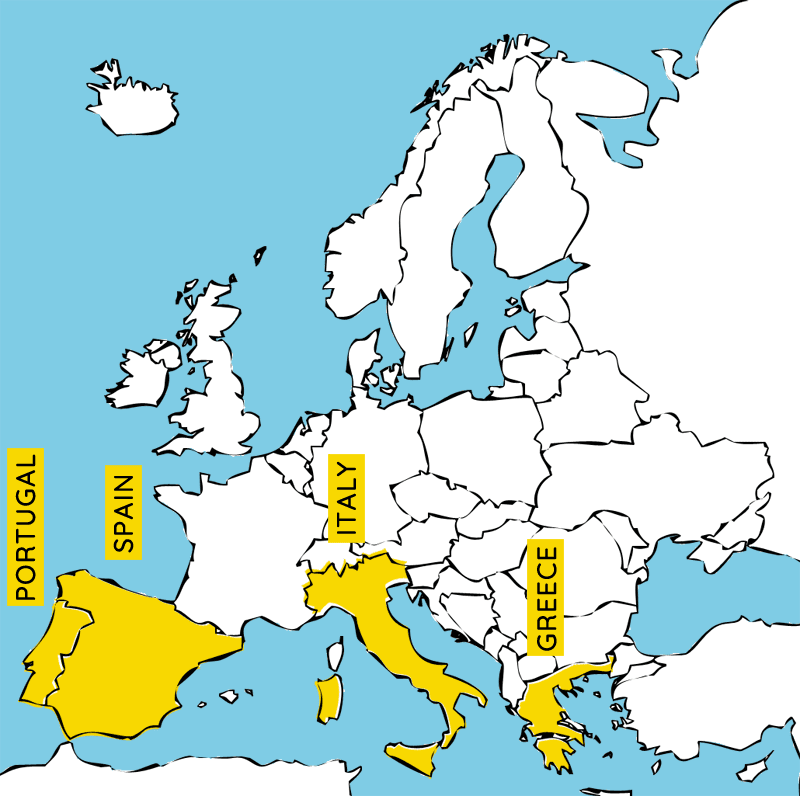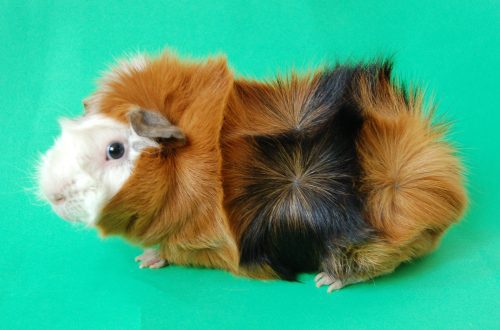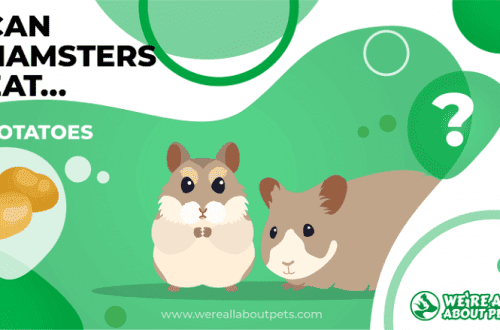
The emergence of pigs in Europe
The discovery of America by Christopher Columbus made possible the contact of the guinea pig with the Old World. These rodents came to Europe, being brought on ships by the Spanish conquerors 4 centuries ago from Peru.
For the first time, the guinea pig was described scientifically in the writings of Aldrovandus and his contemporary Gesner, who lived in the 30th century. According to their research, it turns out that the guinea pig was brought to Europe about 1580 years after the victory of Pizarro over the Indians, i.e. around XNUMX
The guinea pig is called differently in different countries.
In England – Indian little pig – a small Indian pig, restless cavy – restless (mobile) pig, Guinea pig – Guinea pig, domestic cavy – domestic pig.
The Indians call the pig a name that Europeans hear as “cavy”. The Spaniards living in America called this animal the Spanish name of the rabbit, while other colonists stubbornly continued to call it a small pig, this name was brought to Europe along with the animal. Before the arrival of Europeans in America, the pig served as food for the natives. All Spanish writers of that time refer to her as a little rabbit.
It may seem strange that this wild animal is called a guinea pig, although it does not belong to a pig breed and is not a native of Guinea. This, in all likelihood, is due to the way the Europeans learned about the existence of mumps. When the Spaniards entered Peru, they saw a small animal for sale! very similar to a suckling pig.
On the other hand, ancient writers called America India. That’s why they called this little animal porco da India, porcella da India, the Indian pig.
The name guinea pig seems to be of English origin, and M. Cumberland says that, in all probability, it comes from the fact that the British had more trade relations with the coast of Guinea than with South America, and therefore were accustomed to look at Guinea as part of India. The resemblance of a pig to a domestic pig came mainly from the way the natives cooked it for food: they doused it with boiling water to clean it of wool, as was done to remove the bristles from a pig.
In France, the guinea pig is called cochon d’Inde – Indian pig – or cobaye, in Spain it is Cochinillo das India – Indian pig, in Italy – porcella da India, or porchita da India – Indian pig, in Portugal – Porguinho da India – Indian mumps, in Belgium – cochon des montagnes – mountain pig, in Holland – Indiaamsoh varken – Indian pig, in Germany – Meerschweinchen – guinea pig.
So, it is permissible to make an assumption that the guinea pig spread in Europe from west to east, and the name that exists in Russia – guinea pig, possibly indicates the importation of pigs “from over the sea”, on ships; part of the mumps spread from Germany, which is why the German name guinea pig also passed to us, while in all other countries it is known as the Indian pig. This is probably why it was called overseas, and then sea.
The guinea pig has nothing to do with the sea or pigs. The very name “mumps” appeared, probably due to the structure of the head of the animals. Maybe that’s why they called her a pig. These animals are characterized by an elongated body, a coarse coat, a short neck, and relatively short legs; the forelimbs have four, and the hind limbs have three fingers, which are armed with large hoof-shaped, ribbed claws. The pig is tailless. This also explains the name of the animal. In a calm state, the voice of a guinea pig resembles the gurgling of water, but in a state of fright, it turns into a screech. So the sound made by this rodent is very similar to the grunting of pigs, which is apparently why it was called “pig”. It is assumed that in Europe, as well as in its homeland, the guinea pig originally served as food. Probably, the origin of the English name for pigs is connected with these events – guinea pig – a pig for a guinea (guinea – until 1816, the main English gold coin, got its name from the country (Guinea), where the gold necessary for its minting was mined).
The guinea pig belongs to the order of rodents, the family of pigs. The animal has two false-rooted, six molars and two incisors in each jaw. A characteristic feature of all rodents is that their incisors grow throughout their lives.
The incisors of rodents are covered with enamel – the hardest substance – only on the outer side, so the back of the incisor is erased much faster and due to this, a sharp, outer cutting surface is always preserved.
The incisors serve to gnaw through various roughage (plant stems, root crops, hay, etc.).
At home, South America, these animals live in small colonies on the plains overgrown with shrubs. They dig holes and arrange shelters in the form of entire underground towns. The pig does not have the means of active protection from enemies and alone would be doomed. But to take a group of these animals by surprise is not so easy. Their hearing is very subtle, their instinct is simply amazing, and, most importantly, they take turns resting and guarding. On an alarm signal, the pigs instantly hide in minks, where a larger animal simply cannot crawl through. An additional protection for the rodent is its rare cleanliness. The pig many times a day “washes”, combs and licks the fur for itself and its babies. It is unlikely that a predator will be able to find a pig by smell, most often its fur coat emits only a slight smell of hay.
There are many types of wild cavia. All of them are outwardly similar to domestic ones, tailless, but the color of the fur is one-color, more often gray, brown or brownish. Although the female has only two nipples, there are often 3-4 cubs in one litter. Pregnancy lasts about 2 months. The cubs are well developed, sighted, grow rapidly and after 2-3 months they themselves are already able to give offspring. In nature, there are usually 2 litters per year, and more in captivity.
Usually the weight of an adult pig is approximately 1 kg, the length is about 25 cm. However, the weight of individual specimens approaches 2 kg. Life expectancy for a rodent is relatively large – 8-10 years.
As a laboratory animal, the guinea pig is indispensable due to its high sensitivity to pathogens of many infectious diseases in humans and farm animals. This ability of guinea pigs determined their use for the diagnosis of many contagious diseases of humans and animals (for example, diphtheria, typhus, tuberculosis, glanders, etc.).
In the works of domestic and foreign bacteriologists and virologists I.I. Mechnikov, N.F. Gamaleya, R. Koch, P. Roux and others, the guinea pig has always occupied and occupies one of the first places among laboratory animals.
Consequently, the guinea pig was and is of great importance as a laboratory animal for medical and veterinary bacteriology, virology, pathology, physiology, etc.
In our country, the guinea pig is widely used in all areas of medicine, as well as in the study of human nutrition, and especially in the study of the action of vitamin C.
Among her relatives are the well-known rabbit, squirrel, beaver, and the huge capybara, familiar only from the zoo.
The discovery of America by Christopher Columbus made possible the contact of the guinea pig with the Old World. These rodents came to Europe, being brought on ships by the Spanish conquerors 4 centuries ago from Peru.
For the first time, the guinea pig was described scientifically in the writings of Aldrovandus and his contemporary Gesner, who lived in the 30th century. According to their research, it turns out that the guinea pig was brought to Europe about 1580 years after the victory of Pizarro over the Indians, i.e. around XNUMX
The guinea pig is called differently in different countries.
In England – Indian little pig – a small Indian pig, restless cavy – restless (mobile) pig, Guinea pig – Guinea pig, domestic cavy – domestic pig.
The Indians call the pig a name that Europeans hear as “cavy”. The Spaniards living in America called this animal the Spanish name of the rabbit, while other colonists stubbornly continued to call it a small pig, this name was brought to Europe along with the animal. Before the arrival of Europeans in America, the pig served as food for the natives. All Spanish writers of that time refer to her as a little rabbit.
It may seem strange that this wild animal is called a guinea pig, although it does not belong to a pig breed and is not a native of Guinea. This, in all likelihood, is due to the way the Europeans learned about the existence of mumps. When the Spaniards entered Peru, they saw a small animal for sale! very similar to a suckling pig.
On the other hand, ancient writers called America India. That’s why they called this little animal porco da India, porcella da India, the Indian pig.
The name guinea pig seems to be of English origin, and M. Cumberland says that, in all probability, it comes from the fact that the British had more trade relations with the coast of Guinea than with South America, and therefore were accustomed to look at Guinea as part of India. The resemblance of a pig to a domestic pig came mainly from the way the natives cooked it for food: they doused it with boiling water to clean it of wool, as was done to remove the bristles from a pig.
In France, the guinea pig is called cochon d’Inde – Indian pig – or cobaye, in Spain it is Cochinillo das India – Indian pig, in Italy – porcella da India, or porchita da India – Indian pig, in Portugal – Porguinho da India – Indian mumps, in Belgium – cochon des montagnes – mountain pig, in Holland – Indiaamsoh varken – Indian pig, in Germany – Meerschweinchen – guinea pig.
So, it is permissible to make an assumption that the guinea pig spread in Europe from west to east, and the name that exists in Russia – guinea pig, possibly indicates the importation of pigs “from over the sea”, on ships; part of the mumps spread from Germany, which is why the German name guinea pig also passed to us, while in all other countries it is known as the Indian pig. This is probably why it was called overseas, and then sea.
The guinea pig has nothing to do with the sea or pigs. The very name “mumps” appeared, probably due to the structure of the head of the animals. Maybe that’s why they called her a pig. These animals are characterized by an elongated body, a coarse coat, a short neck, and relatively short legs; the forelimbs have four, and the hind limbs have three fingers, which are armed with large hoof-shaped, ribbed claws. The pig is tailless. This also explains the name of the animal. In a calm state, the voice of a guinea pig resembles the gurgling of water, but in a state of fright, it turns into a screech. So the sound made by this rodent is very similar to the grunting of pigs, which is apparently why it was called “pig”. It is assumed that in Europe, as well as in its homeland, the guinea pig originally served as food. Probably, the origin of the English name for pigs is connected with these events – guinea pig – a pig for a guinea (guinea – until 1816, the main English gold coin, got its name from the country (Guinea), where the gold necessary for its minting was mined).
The guinea pig belongs to the order of rodents, the family of pigs. The animal has two false-rooted, six molars and two incisors in each jaw. A characteristic feature of all rodents is that their incisors grow throughout their lives.
The incisors of rodents are covered with enamel – the hardest substance – only on the outer side, so the back of the incisor is erased much faster and due to this, a sharp, outer cutting surface is always preserved.
The incisors serve to gnaw through various roughage (plant stems, root crops, hay, etc.).
At home, South America, these animals live in small colonies on the plains overgrown with shrubs. They dig holes and arrange shelters in the form of entire underground towns. The pig does not have the means of active protection from enemies and alone would be doomed. But to take a group of these animals by surprise is not so easy. Their hearing is very subtle, their instinct is simply amazing, and, most importantly, they take turns resting and guarding. On an alarm signal, the pigs instantly hide in minks, where a larger animal simply cannot crawl through. An additional protection for the rodent is its rare cleanliness. The pig many times a day “washes”, combs and licks the fur for itself and its babies. It is unlikely that a predator will be able to find a pig by smell, most often its fur coat emits only a slight smell of hay.
There are many types of wild cavia. All of them are outwardly similar to domestic ones, tailless, but the color of the fur is one-color, more often gray, brown or brownish. Although the female has only two nipples, there are often 3-4 cubs in one litter. Pregnancy lasts about 2 months. The cubs are well developed, sighted, grow rapidly and after 2-3 months they themselves are already able to give offspring. In nature, there are usually 2 litters per year, and more in captivity.
Usually the weight of an adult pig is approximately 1 kg, the length is about 25 cm. However, the weight of individual specimens approaches 2 kg. Life expectancy for a rodent is relatively large – 8-10 years.
As a laboratory animal, the guinea pig is indispensable due to its high sensitivity to pathogens of many infectious diseases in humans and farm animals. This ability of guinea pigs determined their use for the diagnosis of many contagious diseases of humans and animals (for example, diphtheria, typhus, tuberculosis, glanders, etc.).
In the works of domestic and foreign bacteriologists and virologists I.I. Mechnikov, N.F. Gamaleya, R. Koch, P. Roux and others, the guinea pig has always occupied and occupies one of the first places among laboratory animals.
Consequently, the guinea pig was and is of great importance as a laboratory animal for medical and veterinary bacteriology, virology, pathology, physiology, etc.
In our country, the guinea pig is widely used in all areas of medicine, as well as in the study of human nutrition, and especially in the study of the action of vitamin C.
Among her relatives are the well-known rabbit, squirrel, beaver, and the huge capybara, familiar only from the zoo.





